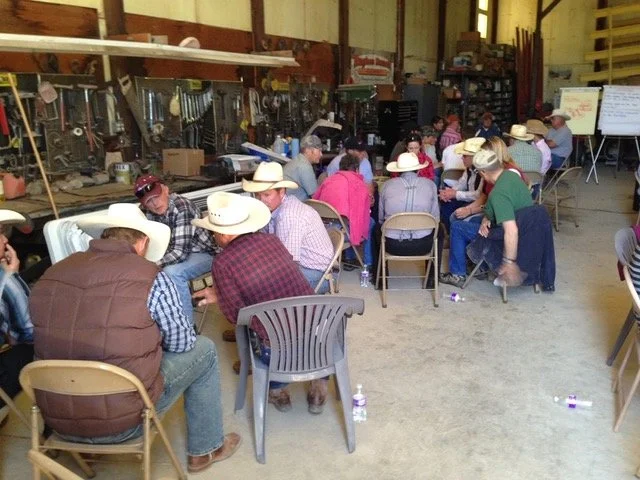Case Studies
Guided by the work of the late Bob Chadwick and, more recently, Jeff Goebel, the Community Consensus model has, across several decades, helped groups resolve disagreements, unsnarl dysfunction, and transcend stalemates.
While groups often seek compromise, an inevitable result is that no one gets what they want. This leaves agreements unstable and plants the seeds for grievance. Here the objective is 100 percent agreement to do the right thing. Sound impossible? We’ve seen it happen time and again!
Here are some examples:
Restoring the Land in New Mexico
A rural community was mired in a conflict that led to suspicion, sabotage, and even gunfire. While the flashpoint was the pumphouse that served ranchers and townspeople, clearly tensions ran much deeper. The Bureau of Land Management brought Jeff in to resolve the conflict. A three-day workshop led to a community agreement to revive long-standing relationships and restore the land. Judy tells the story in her book The Reindeer Chronicles and Other Inspiring Stories of Working With Nature to Heal the Earth.
Increasing Food Production in Mali
During the early 2000s Jeff held workshops in central Mali where there were twelve warring tribes and 85 percent of people were food insecure. At the close of the workshop, Jeff asked participants what they hoped for. The response was unanimous: increase food production. “Why is this impossible?” he asked, and received various replies: people are lazy; the rains aren’t dependable; the soil is bad; we have no money. His next question was: “Given that it’s impossible, if it were possible what would that look like?” Suggestions started flowing: we can grow more leguminous plants; we can manage cattle better; farmers and herders can better negotiate land access. He asked, “Can you increase food production 10%?” People looked at each other and nodded. “How about 20%?” A pause. Maybe if we all work really hard, they reluctantly agreed. “How about 50%?” No—that would be impossible!
Jeff returned 15 months later for the next workshop to find people lined up along the dirt road to greet him. Everyone was excited to tell him that they increased food production by 78%!
Freeing Ranchers to Explore Better Management in Montana
Ranchers in central Montana were despairing that their adult children were moving to cities, seeing no future in a way of life that had sustained many of these families for generations. In 2014 the Montana Grazing Lands Conservation Initiative, the Petroleum County Conservation District, Judith Basin Conservation District, and Nakaya Rife and Rick Caquelin, then of the Natural Resources Conservation Service (NRCS), invited Jeff for a workshop. In discussion circles, participants expressed their love of the land and sorrow that future generations may not experience that. As for best possible outcomes, they all saw better livestock management as a route to financially thriving operations that would make it possible for their children to remain on the land.
What was the barrier to improved management? Seventy-five percent of the ranchers expressed fear that if they changed management—perhaps by adding fencing or weaning calves at 150 days rather than the customary 250 days—their neighbors would think poorly of them. Yet here they were, sitting with their neighbors who had the same problems and the same worry about what others would think! This realization allowed them to look into, and ultimately apply, better practices, an openness that has set the stage for younger ranchers who embrace new approaches to come to the area. Says Nakaya Rife: “One of the outcomes was greater communication and support from neighbors and friends who have shared ranch goals."
Land management consultant Gregg Simonds http://openrangeconsulting.com/ was there: “This was held on a ranch in a big white barn that had been command central for all things ranching. This was a ranchers’ place of worship. The trucks were ranch trucks—even if they were washed, they’d look different from city trucks. The ranchers came in clean, but like their trucks they had the look of work—ranch work—that can’t be mimicked with belts, scarves and hats. ‘Can-do’ surrounded them all, and you don’t talk about your worries. But they did open up to each other because of Jeff’s capabilities and process. I was very impressed with it. There was some magic pixy dust in the barn that day.”


